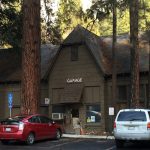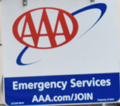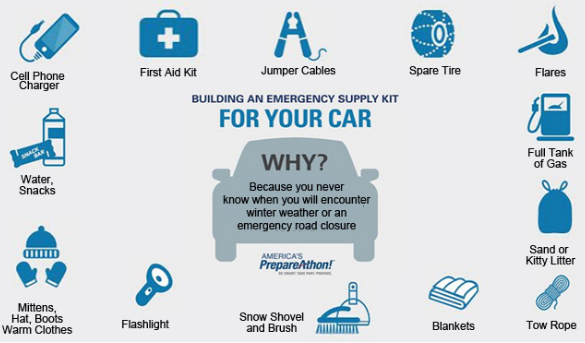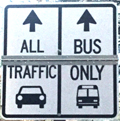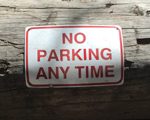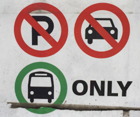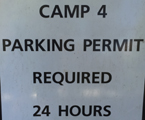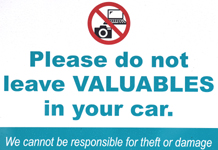For road trips, we advise people to check everything that
powers,
stops,
cools,
heats,
ventilates
and lights their vehicle
before they leave on an adventure.
A lot of people don’t regularly drive much, but for example, our trip to Wyoming and back is at least 2,000 miles plus other touring you might decide to do.
When you are at home you can usually quickly get issues with your vehicle resolved at a nearby mechanic or dealer of your make/model, so many people don’t regularly check their vehicle’s fluid levels, tire pressure, brake wear, etc. People on a budget often put up with not-essential-for-safe-driving problems with their cars. But deferred repairs and maintenance can spoil a road trip.
This webpage includes things people can do without paying a mechanic.
– – – – – – – – – – – – – – – – – – – – – – – – – – – – – – – – – – – – – – – – – –
On the road, there are often businesses on the way and near your destination to help you with your vehicle troubles.
The Yosemite National Park garage,
for example, can handle most minor emergency repairs such as battery charge, radiators, water pumps, brakes and tire repairs, (IF they happen to have a needed part in stock, otherwise they will have to order it or you will need to look for help elsewhere, which could include expensive towing out of the park.) This garage is the closest to where we stay on our winter quarter Yosemite trip.
Jackson, Wyoming, the main town near our Grand Teton National Park adventure, has major parts stores and repair facilities, but it is over 40 miles from where most people stay in the park on our trip, and the drive there from home is 1,000 miles.
– – – – – – – – – – – – – – – – – – – – – – – – – – – – – – – – – – – – – – – – – –
I usually have a Code Reader that we can plug into most modern vehicles and find out why that light on the dashboard is warning you that your vehicle is having trouble. (It has been a relief for some trip participants to find out that the warning light was just the gas cap not securely tightened – and find that out without having to drive all the way in to town and pay a mechanic to look at their vehicle!)
But on the highways across Nevada and Idaho on the way to Wyoming,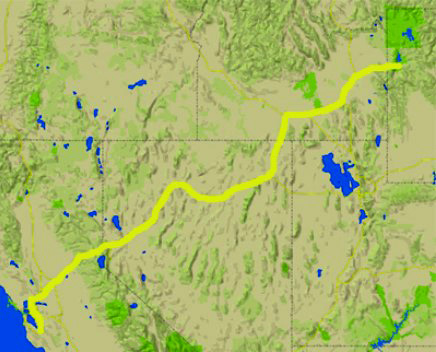
you can be very far from help.
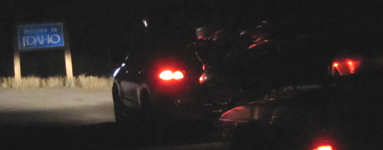
Things you can do, usually without paying a mechanic,
in advance of your adventure include:
Consider doing this next one even if you do not have a road trip planned:
Many people know that they should not just put their new registration validation sticker on top of the old one, because thieves steal registration validation stickers from license plates, thousands of them every year, so they do not need to pay for a sticker for their car (and until they are caught, can get away with not smogging their car or paying for registration.)
https://www.snopes.com/fact-check/sticker-shock-3/ has advice on keeping your license plate date-of-expiration registration stickers from being stolen, as below:
“Most of us simply clean off the surface of the previous sticker and put the new one on top of it. That way, all a thief has to do is to pry off the layered stack, clean up the back and glue your sticker onto their license plate, or worse, sell it to someone else to apply it to theirs. . . Instead you should “scrape the sticker location completely clean of old stickers, wash the site with lighter fluid . . (or mineral spirits, paint thinner, GooGone adhesive remover) . . . and then apply the new one and then rub it down well . . . once the site is cleaned off and the new sticker is applied and well rubbed down, if you take a sharp Exacto knife or something similar . . . (utility knife blade or razor blade, but a kitchen knife or jackknife would probably not do the job well). . . and score lines vertically and horizontally across the sticker, it guarantees that it can only be removed in small, useless pieces.”
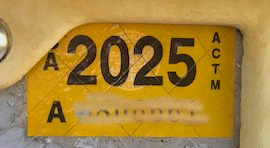
Thieves ALSO steal license plates,
(they can quickly and easily unscrew your license plate with a standard or Phillips screwdriver)
WHY? Because: They don’t have insurance
They have a suspended license
To put your plates on a car they stole.
Replacing them is time consuming,
costs you extra money,
and you risk being repeatedly pulled over without a license plate,
so these next roadtrip preparation steps should be done soon, even before a road trip.
And imagine how difficult it will be to replace your plates / registration stickers when you are out of state.
https://www.wtsp.com/article/news/local/heres-why-thieves-are-stealing-your-license-plates/67-550998504 includes that same sticker theft prevention advice above and:
“Buy special security screws that are difficult to remove with common screwdrivers.
You can order them online or get them from a local auto shop.”
Ones we bought and used on all our car and trailer license plates cost $20+ for the special screwdriver and 50 assorted screws. You could get a set and share with friends.
If you intend to drive a convertible and it has an electric power top, be sure you know how to put the top up manually in case the push-button function stops working. Rain storms can come in quickly and heavily. You should have alternate ways to get around if lightning is forecast, because
you are not safe during lightning in a convertible.
“The only safe place is inside a substantial building or hard-topped vehicle.”
Do these as a courtesy to others,
You can find the instructions in your owners manual to turn off the loud beep your car makes when you use the keyless ‘remote’ pushbutton on your keychain to unlock the car. (It should not take any tools, but could be as easy as holding down a button on the remote for X number of seconds X number of times.)
Then you won’t forget about the beep it makes and wake up everyone in nearby campsites or nearby cabins / rooms in the middle of the night.
The Outdoor Club requires: If you park at the campground or anywhere next to hotel buildings / cabins
you will turn off your car alarm,
you will disable the loud beep that goes off when the keyless remote is used to unlock the car OR you will take the remote off the keychain and use the key to unlock the door(s).
You will disable the beep that goes off when the trunk is opened / any other beep.
In the interest of letting others sleep, if you can’t disable the beep(s) (or disconnect the beepers) you will not drive that vehicle or you will park it at a day use parking lot, away from overnight accommodations.
If you rent a vehicle please learn how to turn off car alarms/disable beeps at the rental business, BEFORE you leave for the trip. (AND if you rent a vehicle make sure well in advance they will let you use chains on it, as you are required to carry chains all winter in Yosemite even if it does not seem like you will need them!) It has snowed in Yosemite valley in April and chains were required.
(A rental company explained chains policies this way “Most rental car companies discourage or forbid the use of snow chains on their vehicles. The reason is chains can cause damage to the vehicle’s wheel wells, tires, or to the road if not installed properly. Many rental contracts explicitly prohibit installing tire chains or cables. If you were to ignore that and damage the car, you’d likely be liable for the repairs, not to mention voiding insurance coverage.”)
– Keep at least a half-full gas tank
During power outages (PG&E rolling brownouts, storm damage, a truck runs into a power pole, after a major earthquake), gas stations can’t pump gas. And you might not even be able to get home from work, school, shopping.
You’ll also want to keep at least a half-full gas tank
in case you need to turn back completely and change your route on a road trip,
or just idle, drive slowly.
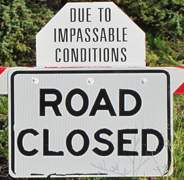
In the winter, keep at least a half-full gas tank to prevent gas line freezeup. Why? Any space above the gas in the tank has moist air in it. In the cold, especially overnight, the moist air can condense into water. The water will sink to the bottom of the tank and if enough builds up it can end up going to your fuel line and cause hard starting or even block the fuel line completely.
If any chance of snow, and on all fall/winter/spring trips to Yosemite, for example, ALWAYS CARRY TIRE CHAINS OR CABLES! Make sure they are the proper size for your tires and are in working condition. This test is best done at home, on a dry day, in your driveway, before it snows.
Chains must be installed on the drive wheels. Make sure you know if your vehicle is front or rear wheel drive. If you don’t know ask your mechanic or check your vehicle owner’s manual.
Wise winter travelers lift the wiper blades off their windshield as soon as they park, or at least before the snow starts, so the blades won’t be frozen on the windshield in the morning:
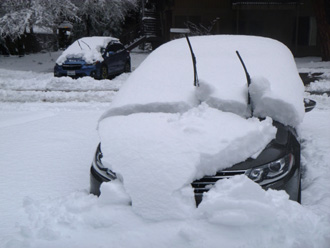
On road trips your onboard tire pressure indicator light may come on when the pressure in your tires changes when you go from warm temperatures to cold weather, especially driving on snowy roads. Or the warning light may come on when you start it up after you park it overnight in the cold, even in the summer in Grand Teton National Park, after you were recently driving it across Nevada in warmer temperatures. Driving a few miles should cause the warning light to turn off, but it is a good idea to check the tire pressure with a gauge to be sure you do not have some other problem, such as a slow air leak. (Yup, you guessed it, we always have a tire gauge with us.)
Car inspection checklist:
Horn operation (Easy, just try honking it.)
Headlights, taillights, turn signals (turn them all on, one at a time, and have someone stand at the rear of the vehicle and watch to see if your blinkers really do blink, brake lights really do go on when you press the brake pedal, for example).
car lights https://haynes.com/en-us/tips-tutorials/your-cars-different-types-lights-and-how-check-them
Brake, Taillight, and Turn Signal Bulb Replacement https://haynes.com/en-us/tips-tutorials/taillight-brake-light-and-turn-signal-bulb-replacement
Tires – be sure you have sufficient depth of tread. There is a way to check without owning any tools:
“Rather than using a Lincoln penny, a Washington quarter is more realistic, so say some tire aficionados.”
https://us.haynes.com/blogs/tips-tutorials/tire-depth-explained-how-thick-should-your-tread-be
Check tires for bubbles or bulges in sidewall that can cause a tire to blow as you are driving. (Replace these tires.)
Properly inflating your tires can give you up to 3% higher mileage / lower gas cost (and a safer ride because underinflated tires make the car harder to steer and are they more prone to flats that you reeealy don’t want on a long road trip). You can find the proper tire inflation pressure on most vehicles driver’s side door jambs or possibly on the edge of the driver’s seat. What is printed on the tire is the maximum tire pressure and is usually higher than the recommended pressure.
https://us.haynes.com/blogs/tips-tutorials/checking-tire-pressure
https://www.michelinman.com/auto/auto-tips-and-advice/tire-pressure
Windshield wiper operation (You might have been putting up with wipers
that are squeaky,
have squeegee rubber edges that are cracked or torn,
are worn enough that they create streaks when they don’t really contact all of the windshield as they wipe),
Choosing the right wiper blades:
https://haynes.com/en-us/tips-tutorials/wiper-blades-and-mounting-styles
We can expect a lot of rain at times on club adventures.
Below are brand new wipers trying to keep up with heavy rain:
(Hmmmmm, when was the last time you thoroughly cleaned the inside of your windshield?)
Windshield washer operation (Fluid level in tank and does it squirt on windshield?)
On a budget? The Yosemite Daily report said: “Top off your wiper fluid reservoir with freeze-proof fluid, a few tablespoons of rubbing alcohol added to standard fluid works as well.”
Windshield glass – no cracks that could spread, for example
Interior lights (including instrument panel)
Driver’s floormat securely installed
Fuel tank cap gasket (unscrew fuel tank cap, and look if the gasket is worn out or broken. If any question about it, be sure the mechanic also looks at it if you have the vehicle inspected)
You really want to miss out on that experience on any long road trip.
https://haynes.com/en-us/tips-tutorials/how-jack-and-change-flat-tire
and how to jump start a dead battery
https://haynes.com/en-us/tips-tutorials/how-jump-start-dead-car-battery includes safety advice, such as: “It’s a good idea to wear safety goggles, because there is always a chance of an explosion and batteries are full of acid.” AND it is a good idea to pack a pair of safety googles with your jumper cables and the instructions for how-to-do this that you print out. EVEN better would be to be sure your battery is in perfect working condition.
and for winter trips: Where did you store the snow chains? If you do not have them, the Rangers can refuse to let you into Yosemite National Park. Even in April.
Besides the chains, do you also need new wiper blades, deicing fluid for the windshield washer tank, a windshield scraper or deicer? Pack something to kneel on when you are putting the chains on. Is it time for new antifreeze or a brake job? Do the defroster and heater actually function? Do you know how to use your jack and is it still in the car?
(These next ones often are Easy Do It Yourself depending on model of car. Your owner’s manual might give instructions.)
Air filter
https://haynes.com/en-us/tips-tutorials/changing-engine-air-filter
Cabin air filter
Fluids (coolant, power steering, brake reservoir, manual transmission clutch reservoir, antifreeze)
Check brakes for a spongy pedal
Corrosion on battery terminals (white powder) – – – If the owner of the Buick below had cleaned the battery terminals before the trip, the half hour spent trying to get his car to start the last morning of the 2016 winter Yosemite trip could have been spent on something more fun.
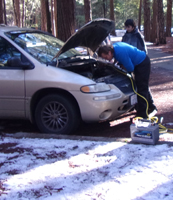
It could be worth your while to have a mechanic look at all of these
– (and not right before your road trip when it turns out you don’t have enough time to fix them):
Brakes (worn, or would be too worn by the time you get to your destination)
Fluid leaks in brakes
Brake lines, hoses
Parking brake operation
Battery condition (cables/clamps/corrosion)
Battery state of health (open circuit voltage)
Cooling system (leaks)
Hoses (cracks/damage/leaks)
Drive belts (cracks/damage/wear)
Radiator core/air conditioning condenser/transmission fluid cooler/power steering fluid cooler
Fluids: Transmission/transaxle, Transfer case (if equipped), Differential (not used on front-wheel drive; front and rear differentials on 4-wheel drive)
Propeller shaft/driveshaft (damage/leaks/U-joints)
Drive shaft/axle shaft rubber boots (damage/deterioration/leaks)
Axle hubs and bearings (leaks/noise)
Steering linkage (damage/leaks/worn components)
Suspension front and rear (damage/leaks/worn components)
Fluid leaks (engine/transmission/transaxle/differential(s))
Exhaust system (damage/leaks/corrosion)
– – Vehicles with excessively loud exhaust systems disturb nesting birds and other wildlife and are not allowed on De Anza Outdoor Club trips. This can include a muffler that needs repair or an after-market one advertised, for example, to deliver “loud sound both during idle and acceleration . . . a deep and aggressive exhaust note suitable for enthusiasts who love the loud sound . . . powerful, classic muscle car sound.”
Fuel lines and connections
Fuel tank (mounting security, corrosion, damage, leaks)
Evaporative emission control system (damage/leaks/corrosion)
If your vehicle has a distributor (common before 2000, and on some vehicles after that), have the rotor, cap and condenser checked and replaced if necessary. If your owners manual says that the spark plugs need to be replaced periodically, check the vehicle’s mileage to see if it’s time to replace them. If you’re uncertain of the spark plugs’ condition, it’s a good idea to have them checked.
you can get better service
if you know the
make (Toyota, Chevrolet, Mazda, etc.)
model (Sequoia, Malibu, MX-5, etc.)
and year,
as well as the engine size (V8 4.6L, V8 5.7L, V6 2.4L, V6 2.0L, 4 cylinder 1.8 L, diesel 6.2 L, etc.) of the vehicle.
If you can’t get your vehicle to a garage (example: did not bring an operable spare tire or locked yourself out of that rental car) and have an auto club policy, call the phone number on the back of the auto association card. If you do not have a policy, call 911.
Before you call, consult maps, (when in Yosemite or another national park, consult the map in the park newspaper you got when you entered the park) and think carefully through the description of where you are that you will give the person you talk to. For example, “a parking lot at Yosemite Valley Lodge” is not accurate enough for them to find you, there are a half dozen Lodge parking lots … describe WHICH parking lot, next to / between which building(s)
 and which corner / edge of the parking lot.
and which corner / edge of the parking lot.
See also: Yosemite Valley garage.
Big animals can do big damage to your vehicle if you can’t stop in time, either because of lack of maintenance to your brakes,
or speed in excess of your needed stopping distance.
Here a Chevy after it hit a bison:
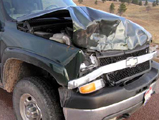
– – – – – – – – – – – – – – – – – – – – – – – – – – – – – – – – – – – – – – – – – –
Catalytic converters are being stolen from Priuses at an alarming rate, it only takes a couple of minutes. Some Prius owners have prevented this hassle by having anti-theft shields or bars installed, or by having the catalytic converter welded into the exhaust system.
– – – – – – – – – – – – – – – – – – – – – – – – – – – – – – – – – – – – – – – – – –
Spring and fall can turn into winter unexpectedly.
“• Keep a snow brush and ice scraper in the car. Also, carry a clean cloth to “defog” and clean the inside of the windows.
• Carry an extra ignition key. Many motorists lock themselves out of their vehicles when installing chains or attending to problems.
• Carry an emergency kit for winter. Items to include are: a flashlight with extra batteries, a first-aid kit, flares or emergency triangles, window washer fluid, jumper cables, a tool kit, a blanket or sleeping bag, gloves, paper towels, drinking water and energy bars. Also include, abrasive material such as sand, salt or non-clumping kitty litter and a small shovel. (Floor mats placed under the “drive” wheels can be used in an emergency to help free a vehicle.)”
“What to Do if You Get Stranded
Staying in your vehicle when stranded is often the safest choice if winter storms create poor visibility or if roadways are ice covered.
These steps will increase your safety when stranded:
·Tie a brightly colored cloth to the antenna as a signal to rescuers.
·Move anything you need from the trunk into the passenger area.
·Wrap your entire body, including your head, in extra clothing, blankets, or newspapers.
·Stay awake. You will be less vulnerable to cold-related health problems.
·Run the motor (and heater) for about 10 minutes per hour, opening one window slightly to let in air. Make sure that snow is not blocking the exhaust pipe — this will reduce the risk of carbon monoxide poisoning.
·As you sit, keep moving your arms and legs to improve your circulation and stay warmer.
·Do not eat unmelted snow because it will lower your body temperature.”
__________________________________
Deferred repairs and maintenance of your personal gear can also spoil a road trip
Mend things before the trip, that tiny tear in the rain pants will be easier to fix at home than it will be in the campsite when it’s a big rip and it has started raining heavily.
Your hiking boots do still have tread left on them, correct? Are your boot laces about worn out?
Have you been washing / rinsing / drying clothes with a favorite scented product?
Scented attracts mosquitos and other unpleasant insects,
so for the wash just before the trip you might want to switch to unscented.
Don’t bring clothes camping that have been rinsed or dried with mosquito-attracting scented softeners (plus, dryer sheets can make a greasy stain on clothes if they get stuck to them, and the softeners can decrease the lofting and wicking of garments).
You might also consider choosing clothes that are not black, orange or red as they may attract mosquitos. Lighter colors instead of darker could be a good idea, too. Nature.com reported that “the US military changed its dress shirts from dark blue to light blue in part to mitigate mosquito biting.”
And you could go through your toiletries, shampoo, body soap, lotion, suntan lotion, deodorant etc. and only pack unscented since that great floral scent in the shampoo will attract mosquitos and other annoying insects.
The last time you used your camera, and took out the memory card / chip to look at your photos on a laptop, did you remember to put the memory chip back in? Where is the charger for your digital camera?
Consult with your doctor, Blue Cross/Blue Shield, Kaiser Permanente,
to see if you are up to date on your Tetanus vaccination.
The Centers for Disease Control recommends a Tetanus vaccination every ten years for adults.
One of these:
• Tetanus and diphtheria (Td) vaccine
• Tetanus, diphtheria, and pertussis (Tdap) vaccine
https://www.cdc.gov/vaccines/vpd/tetanus/index.html
Is it time to see the dentist about that tiny ache?
See a more complete list of things to start on well in advance of your road trip, including pictures of tents you should not bring,
at
In advance of the Outdoor Club Grand Teton National Park trip
or at
In advance of the Yosemite Trip.
__________________________________
CSAA or other Auto Association memberships usually give you (or maybe your parent?) free maps.
Paper maps can be easier to use for planning. Yes, you can download maps on your phone, but paper maps can be essential for driving through areas without phone service.
For the Grand Teton trip you will want at least the state maps of California, Nevada, Idaho, Wyoming and Montana. You might also want, for the drive home through more National Parks, Washington and Oregon and/or Colorado, Utah, New Mexico and Arizona.
The Grand Teton National park between-summer-and-fall-quarter trip has a trip transportation page with route advice that can save you hours of driving and includes notes about 87 versus 85 octane.
Safe driving in rain and fog includes info about driving in fog, on black ice, driving in rain, driving in floods (don’t) and chain requirements, with lots of links to follow.
 Prepare for winter driving has a link to bad weather driving tips, tips for using tire chains, tricks for dealing with frozen car locks, how to prepare your vehicle for winter driving, a winter survival kit for your car and what to do if you get stranded.
Prepare for winter driving has a link to bad weather driving tips, tips for using tire chains, tricks for dealing with frozen car locks, how to prepare your vehicle for winter driving, a winter survival kit for your car and what to do if you get stranded.
It includes this advice:
My windows are fogging up faster than my navigator can wipe it off!
Yes, it’s cold out and you filled your car with people to share the trip expenses. They all are exhaling foggy breath, especially when you all sing along to that CD. Have them take turns holding their breath. Okay, maybe that’s not practical. Have them pay up for the gas expense in advance and let them off at the next bus stop. Unthinkable? The swimmers in the Outdoor Club know they can lick the inside of their swim goggles to prevent fogging, but a windshield…?
Not really practical either, well then…
The fog on the windows could be caused by trying to keep the car interior warm. When air is warm breath condenses, so stop and have your passengers put on those longjohns, jackets and maybe even hats, then keep the car cool. Even a few degrees will affect the maximum amount of water in the air quite significantly. With less water in the air the windows will frost up less.
Make sure your air conditioner or heater is in the fresh air position rather than recirc. The recirculate setting reuses the humid air already in the car. The air in the car is quite humid due to those mammals you are giving a ride to, and the outside air is less humid (even if it’s raining/snowing), so pull it in and push it against the inside of the window. And even though you are trying to keep the air in the main compartment coolish, the windows themselves need to be warmer than the cold air/rain/snow hitting them, so set the temperature to warm. Pulling in outside air has the drawback of sucking in truck or diesel exhaust, so pull back from that big rig or go around it. Set the fan to its highest setting if you are going in slow traffic.
Now you can go back to your sing-along or heavy gossip session.
Next time you all get into the car, have each person take a seat, then kick their feet together outside of the car to knock excess snow off before they swing their legs in. Less snow melting in the vehicle also means less moisture in the car and less fog on the windows.
Some people recommend wiping your windshield interior with shaving cream to de-fog it, but we do not because it can smell minty to the bears and they break into vehicles they can smell “food” inside of.
_______________________
![]()
Top reasons not to speed in a National Park has defensive driving advice.
________________________________________________________
Road trip advice and etiquette has practical advice from experienced and newbie carpoolers on cross country trips, including ways to keep from being so bored; planning before the trip; safety issues; drowsy driving; packing; road trip games, storytelling, debates and discussions; links to gas price watch sites, and how to deal with windows that are fogging up faster than your navigator can wipe it off.
How to not collide with a deer, has park service advice that deer whistles do not work.
See also info on determining safe distances from wildlife, with charts and photos to better be able to determine and visualize how far away from wildlife you need to stay to be safe (and obey laws that do have penalties). The people in the photos below are too close to the wild animals:


– – – – – – – – – – – – – – – – – – – – – – – – – – – – – – – – – – –
Drivers should note that there have been sections of road in Yosemite Valley, parts of the year, with two lanes (usually) in the same direction, with the right lane ONLY for the free shuttle buses, ambulances, ski bus, commercial vehicles with ten or more passengers. The NPS says: “The bus lane ensures emergency vehicles can respond to incidents when traffic is backed up and provides preference for mass transit.”
Parking and traffic jams in Yosemite valley tips and tricks has the above advice, with maps of each of the three major day-use parking lots, with advice to help you NOT get a Yosemite National Park traffic or parking ticket, and not contribute to preventable traffic backups. And some details of where you can’t park in Yosemite, or can’t park without a permit.
__________________________________
Also consider this well before a road trip:
![]() If there is any chance you will decide to go Canada you will need a passport. If you do not have one, or any of your potential passengers do not have one, it can take awhile to get, since you need to bring in a birth certificate when you apply for a United States passport and the birth certificate can take awhile to get.
If there is any chance you will decide to go Canada you will need a passport. If you do not have one, or any of your potential passengers do not have one, it can take awhile to get, since you need to bring in a birth certificate when you apply for a United States passport and the birth certificate can take awhile to get.
Logistics for a side trip to Canada from Grand Teton National Park also has details about how to get a Canadian Non-Resident Interprovincial Motor Vehicle Liability Card,sometimes called a “Canadian ID card”
(FREE from your auto insurance carrier).
__________________________________
This warning from Canada can apply to any long-distance drive: “Visitors to large cities and popular tourist destinations should be aware that parked cars are regularly targeted for opportunistic smash-and-grab thefts, and they are cautioned to avoid leaving any unattended possessions in a vehicle, even in the trunk. Due to the high incidence of such crimes, motorists in Montreal, Toronto, Vancouver and some other jurisdictions can be fined for leaving their car doors unlocked or for leaving valuables in view. Visitors should exercise precaution to safeguard their property.”
Another source mentioned smashed windows when car thieves target property left in plain sight such as luggage, purses, electronics, laptops, tablets,
and even expensive sunglasses.
A National Park in a major U.S. city had this prevention advice:
Vehicle Burglaries
When visiting the park, be aware of your surroundings and the people around you just as you would anywhere else.
Protect your vehicle and belongings when visiting the park:
1. SECURE YOUR VEHICLE — Keep doors locked and windows rolled up all the way. Take ID’s, passports, backpacks, cameras, and purses with you. Always lock your vehicle, even if you only step away from it for a moment.
2. KEEP ITEMS OUT OF SIGHT — Make sure luggage, shopping bags, electronics, cell phones, cameras, and other items are hidden. Never leave anything on the seats, dashboard, or floor.
3. TAKE ELECTRONICS WITH YOU — Thieves can find phones, laptops, computers, or other devices by scanning for Bluetooth or wi-fi networks. Turn electronics completely off if you leave items hidden in your vehicle.
4. SECURE YOUR CAR KEYS — Never leave your keys in your vehicle, even if you’re just stepping away for a minute. Be careful of where you keep your spare key. Don’t store your spare key on the inside or outside of your car. It can make it easy for thieves to steal your car. A thief wouldn’t even have to find the key in the vehicle to drive away if the car has a push-start feature.
At the webpage mentioned below, next to this photo, they wrote
“Wrapping vehicle in chicken wire is no longer advised.”
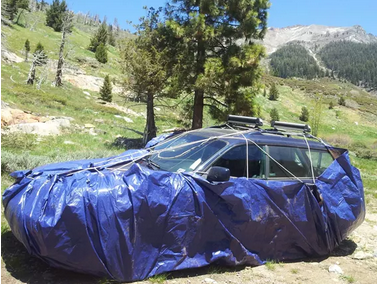
A Sequoia – Kings Canyon National park webpage warns:
“From spring through mid-summer, the marmots of Mineral King have been known to dine on radiator hoses and car wiring. They can disable a vehicle. On several occasions, marmots have not escaped the engine compartment quickly enough and unsuspecting drivers have given them rides to other parts of the parks; several have ridden as far as southern California!
How can you protect your vehicle and marmots?
-Wash the outside, undercarriage, and engine compartment of your vehicle before visiting.
-Physically block marmots by driving over a tarp and then wrapping it around your entire vehicle. Cover the wheel wells. Wrapping chicken wire around the vehicle is no longer advised, as marmots have learned to get around the wire.
-Use only non-toxic methods to prevent marmots from accessing your vehicle. Do not use any poison or substance that pose a risk to the environment, human or animal health, safety or property.
– If you visit Mineral King, especially before August, check for possible damage when you return to your vehicle. Before starting your car, look under the hood for marmots or signs of chewing. Check hoses, belts, electrical wiring, insulation, and radiator fluid level. Inspect under the vehicle for signs of coolant or brake fluid leakage.
-Turn key to “on”, but do not start your vehicle. Check that all indicator lights come on. If lights don’t come on, wiring may have been damaged.
-Start the engine and listen for unusual sounds.
-Report any damage to your vehicle.
The National Park Service and Sequoia and Kings Canyon National Parks are not responsible for damage caused by marmots. Our suggestions for protecting your vehicle may not prevent damage.”
(Besides being useful for people thinking about doing some of the work recommended at this webpage, reading vehicle repair safety is an optional extra credit assignment for the HLTH57A Red Cross first aid certification class at De Anza College. Students are asked to read it and “write up five things you personally can do, and encourage friends to do, that can prevent injuries and other need(s) for first aid.”)
Students who attend all of the four class sessions in HLTH57A have a 100% success rate at earning the Red Cross First Aid certificate.
______________________________
(Links to all Outdoor Club Coming Attractions are here.)
______________________________
